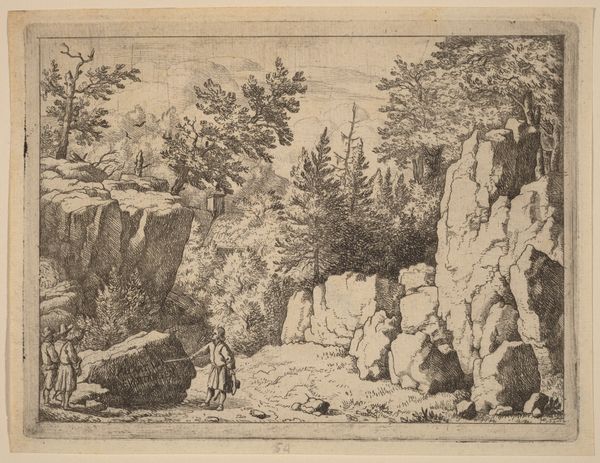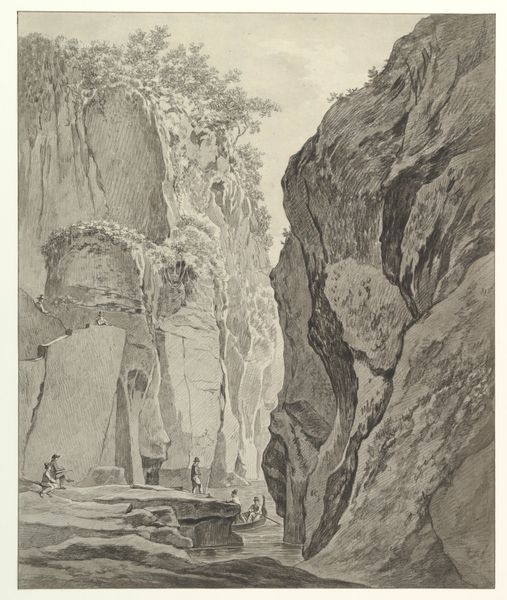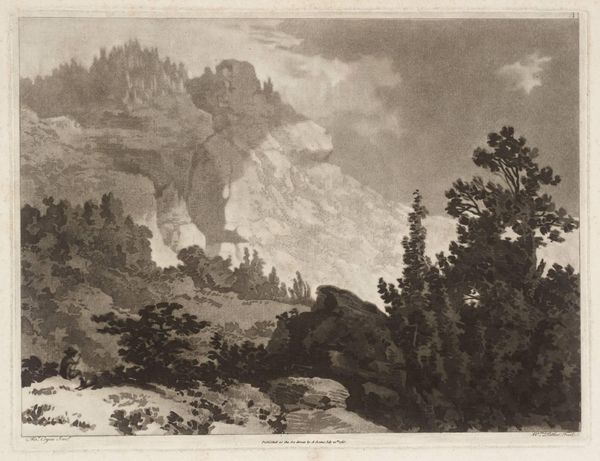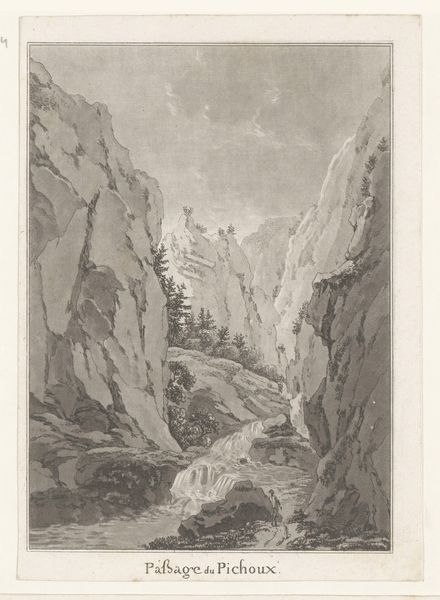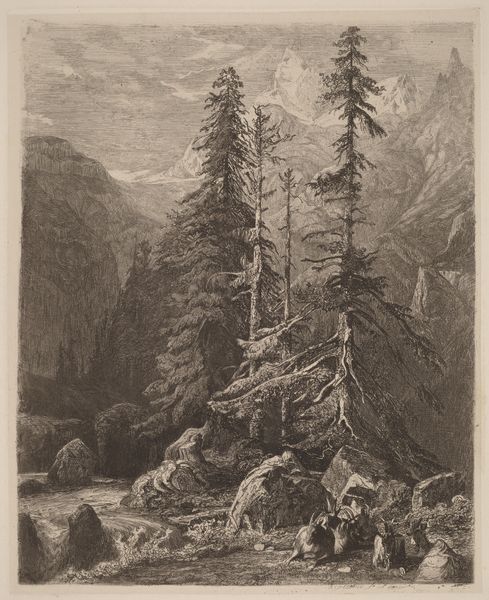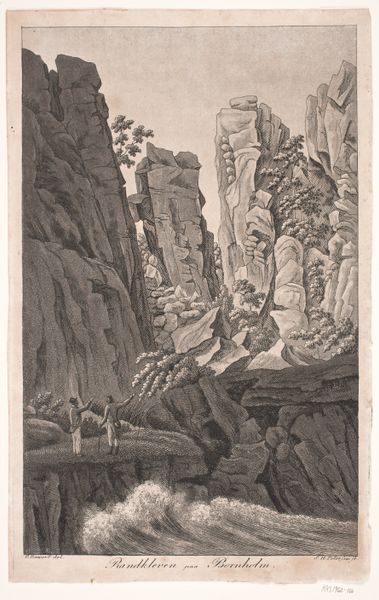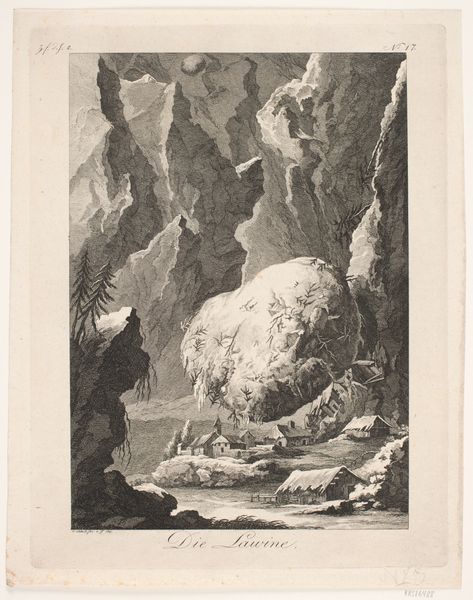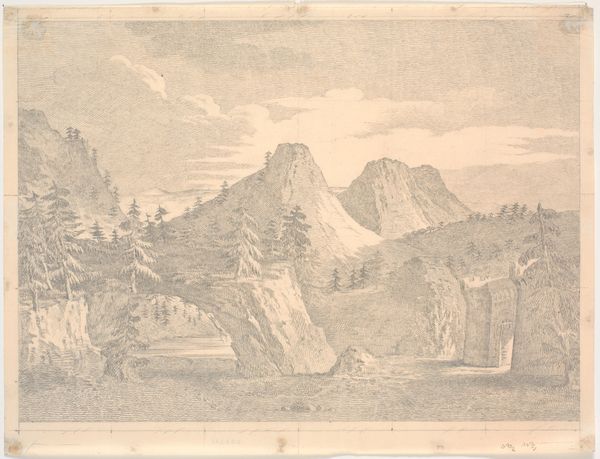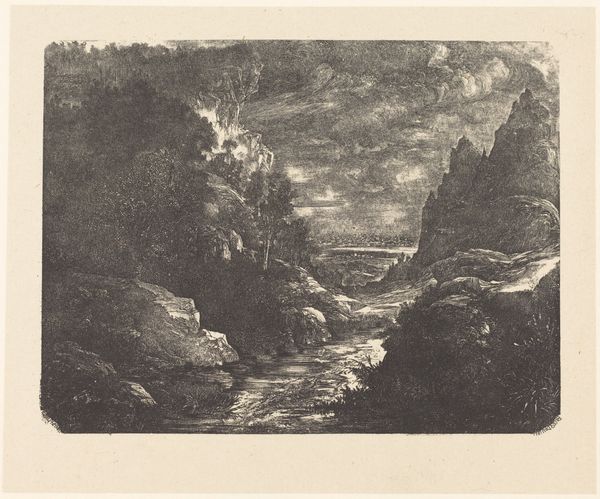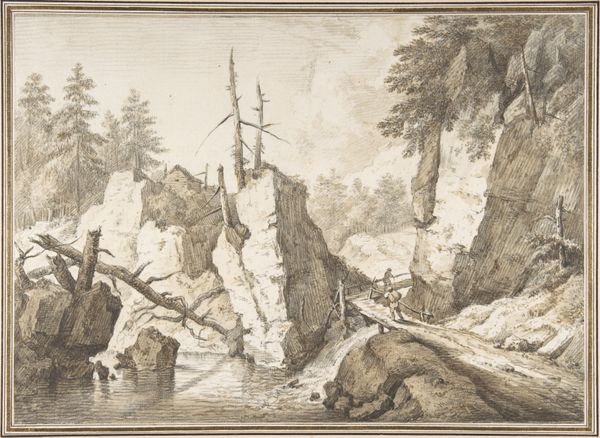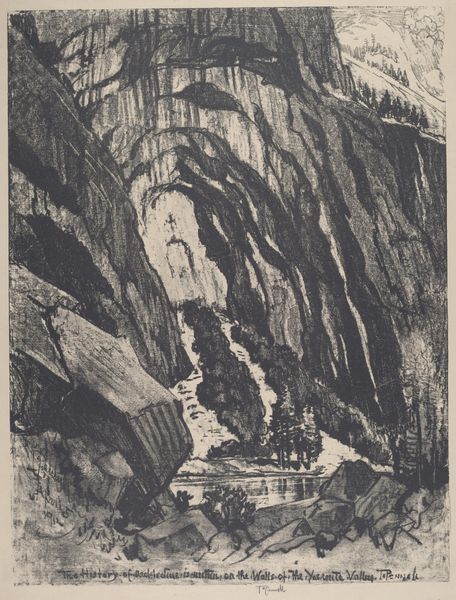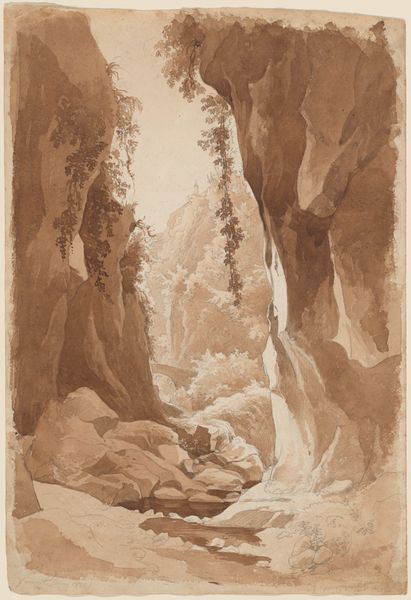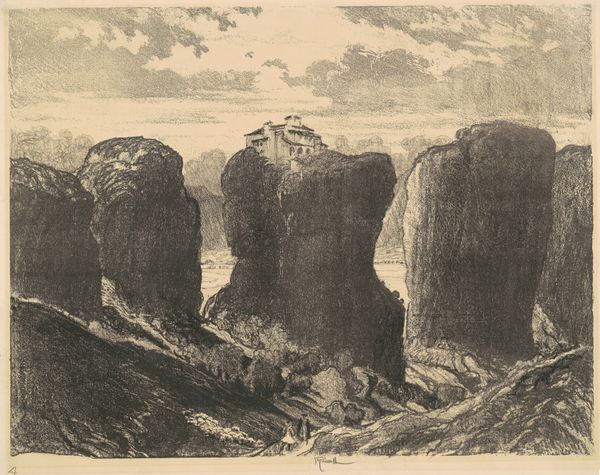
#
pencil drawn
#
amateur sketch
#
light pencil work
# print
#
pencil sketch
#
old engraving style
#
charcoal drawing
#
pencil drawing
#
pen-ink sketch
#
pencil work
#
watercolor
Dimensions: plate: 16.8 × 24.5 cm (6 5/8 × 9 5/8 in.) sheet: 17 × 24.8 cm (6 11/16 × 9 3/4 in.)
Copyright: National Gallery of Art: CC0 1.0
Martin von Molitor etched this "Mountain Landscape with a Rocky Outcrop" around the turn of the 19th century. Dominating the scene is a monolithic rock formation. In many cultures, rocks and mountains symbolize endurance, stability, and the sublime power of nature, a theme echoed in the Romantic movement, which was gaining momentum at the time. Consider how similar rock formations appear in the works of Caspar David Friedrich, embodying a spiritual connection to the natural world. Even earlier, we see echoes of this reverence in classical depictions of Mount Olympus, home of the gods. This visual language suggests a shared, subconscious understanding of nature's overwhelming force. The recurring motif of the prominent rock outcrop is an emblem of nature's imposing presence, evolving from a symbol of divine power to one of romantic introspection. The landscape, therefore, serves as a mirror, reflecting our deepest emotions and fears.
Comments
No comments
Be the first to comment and join the conversation on the ultimate creative platform.
